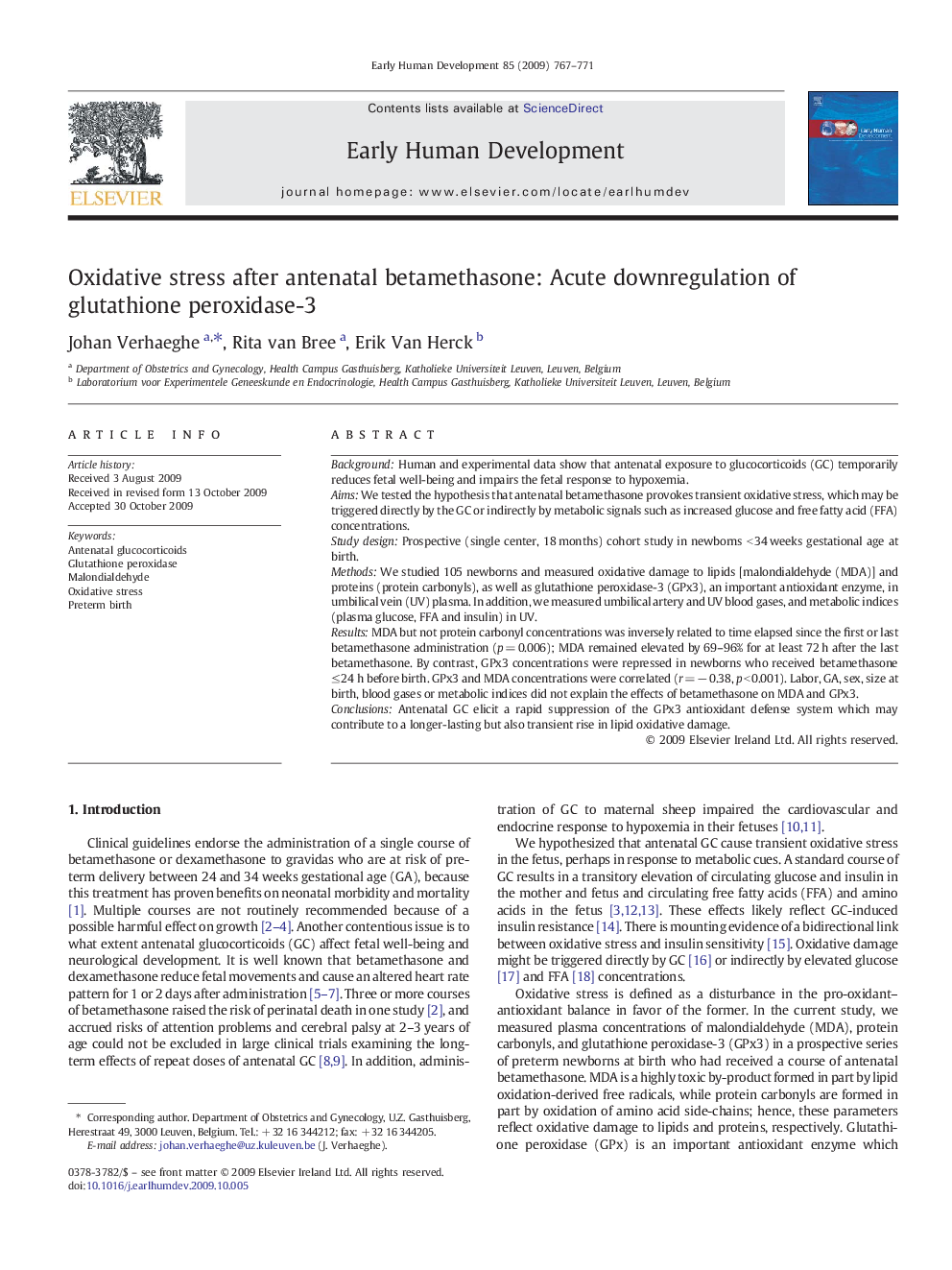| Article ID | Journal | Published Year | Pages | File Type |
|---|---|---|---|---|
| 3917912 | Early Human Development | 2009 | 5 Pages |
BackgroundHuman and experimental data show that antenatal exposure to glucocorticoids (GC) temporarily reduces fetal well-being and impairs the fetal response to hypoxemia.AimsWe tested the hypothesis that antenatal betamethasone provokes transient oxidative stress, which may be triggered directly by the GC or indirectly by metabolic signals such as increased glucose and free fatty acid (FFA) concentrations.Study designProspective (single center, 18 months) cohort study in newborns < 34 weeks gestational age at birth.MethodsWe studied 105 newborns and measured oxidative damage to lipids [malondialdehyde (MDA)] and proteins (protein carbonyls), as well as glutathione peroxidase-3 (GPx3), an important antioxidant enzyme, in umbilical vein (UV) plasma. In addition, we measured umbilical artery and UV blood gases, and metabolic indices (plasma glucose, FFA and insulin) in UV.ResultsMDA but not protein carbonyl concentrations was inversely related to time elapsed since the first or last betamethasone administration (p = 0.006); MDA remained elevated by 69–96% for at least 72 h after the last betamethasone. By contrast, GPx3 concentrations were repressed in newborns who received betamethasone ≤ 24 h before birth. GPx3 and MDA concentrations were correlated (r = − 0.38, p < 0.001). Labor, GA, sex, size at birth, blood gases or metabolic indices did not explain the effects of betamethasone on MDA and GPx3.ConclusionsAntenatal GC elicit a rapid suppression of the GPx3 antioxidant defense system which may contribute to a longer-lasting but also transient rise in lipid oxidative damage.
